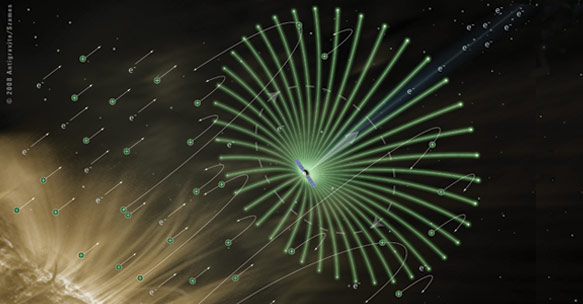
Profile: E-Squid Project
The E-SQUID project conducts research and development of the multiplexed SQUID (Superconducting Quantum Interference Device) readout for detectors in a wide range of wavelengths from the far infrared to X-rays. The technology is planned for use in future space missions, and it also has significant potential for Earth-based applications.
The E-SQUID project is co-ordinated by the University of Helsinki and has brought together three universities, three research institutes, and two commercial companies, who represent the highest levels of expertise in Europe for the technology and its application. The most competitive technology in this area is presently available from non-European sources. A core target of E-SQUID is to upgrade the performance of European solutions and challenge the very best achievements in the world.
SQUIDs can be designed for optimised readout of X-ray micro-calorimeter arrays, as well as similar detectors for longer wavelengths extending to far infrared/sub-mm wavelengths. This technology is already used in modern ground-based astronomical instruments such as SCUBA-2 at James Clerk Maxwell Telescope. The performance and array sizes of presently available solutions are, however, not sufficient for the scientific aims of future instruments like the X-ray micro-calorimeter for ATHENA (Advanced Telescope for High ENergy Astrophysics). Hence the development of improved cryogenic detector systems with larger arrays and smaller noise are very important to the future of European space science. Advancing the X-ray micro-calorimeter technology in Europe to match with the requirements of ATHENA is a suitable goal for the E-SQUID project.
The practical task of the E-SQUID project is to develop prototypes for next generation multiplexed SQUID readout schemes of cryogenic X-ray and far infrared cryogenic detector arrays, modifications of which may then also be applied for optical wavelengths. The improvements are performed in several steps, ensuring the validity of each improvement by tests, and moving onwards to the next phase using improved guidelines provided by the test results. The goal is to find an optimal scalable multiplexing method for each wavelength that enables future design and application for large detector arrays with minimised noise characteristics. The signal multiplexing means a reduced amount of signal lines between the cryogenic detectors and room temperature main electronics, which enables, in practice, the use of considerably bigger detector arrays, and also reduces electrical disturbances and heat conduction.
In the E-SQUID project we develop new technology required in readout electronics of large cryogenic microcalorimeter/bolometer arrays for the use of future space science missions. We demonstrate code domain multiplexing which has advantages over other multiplexing methods when applied to large TES arrays. This alternative has had much less attention among the developers than other multiplexing schemes, although it requires simpler electronics than FDM and induces practically no noise penalty in large arrays when compared to TDM.
The technology developed in E-SQUID enables a new type of cryogenic instruments for a large span of the electromagnetic spectrum from infrared to X-rays. In addition to the space science applications, E-SQUID results will be useful also for other fields of scientific and other applications, where observation instruments with supreme performance level are required.
As a whole, being a purely European effort, the E-SQUID project supports in a very clear way the European community in its mission towards non-dependence in the field of critical space technologies.
The research leading to these results has received funding from the European Community’s Seventh Framework Programme (FP7/2007-2013) under grant agreement no. 262947.
Professor Juhani Huovelin
Division of Geophysics & Astronomy
Department of Physics
+358 919122948






